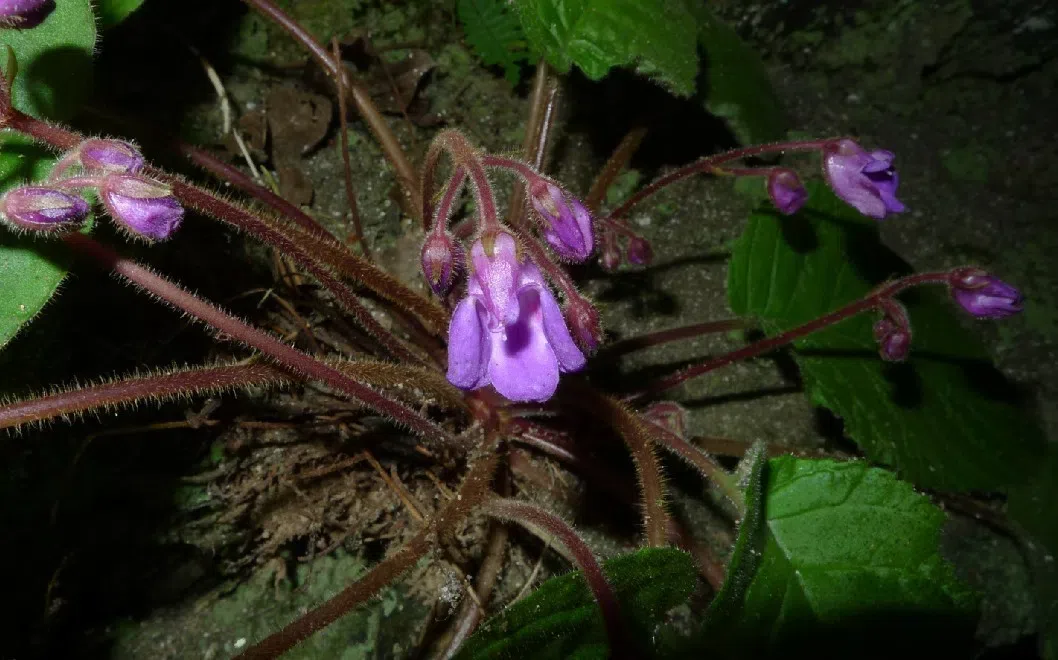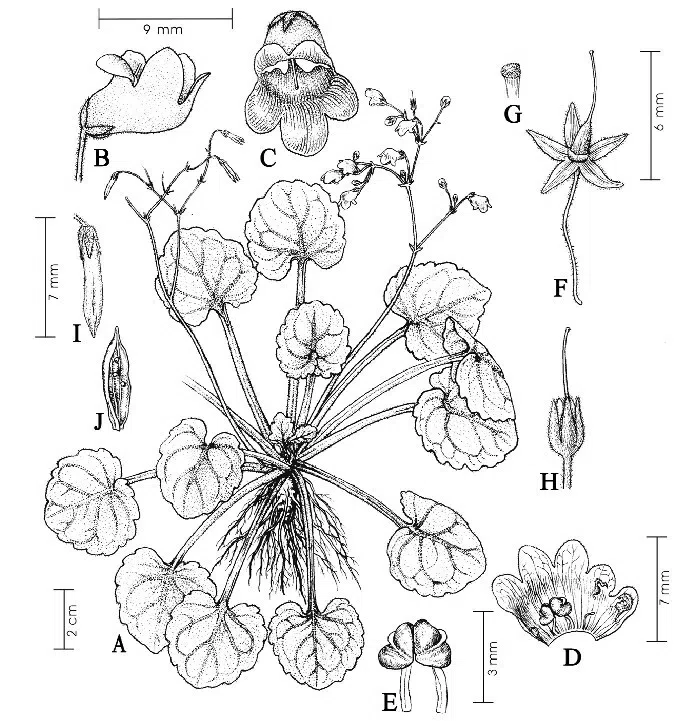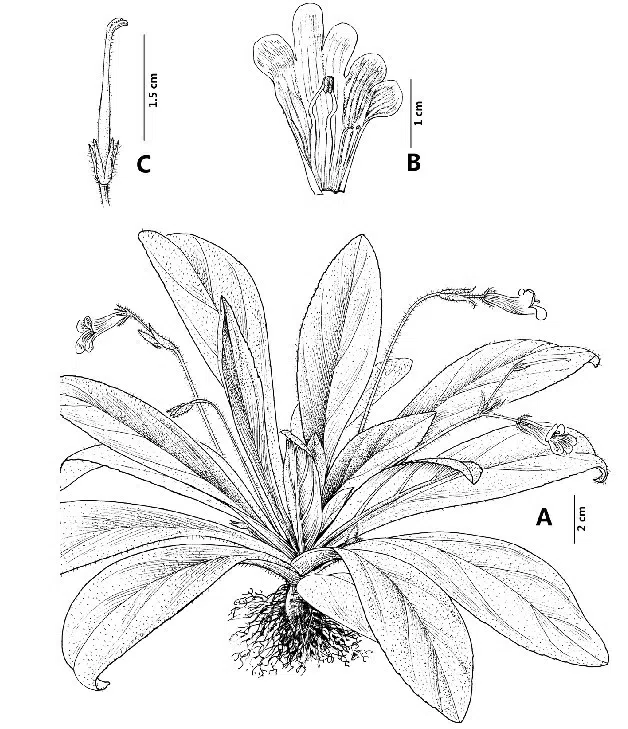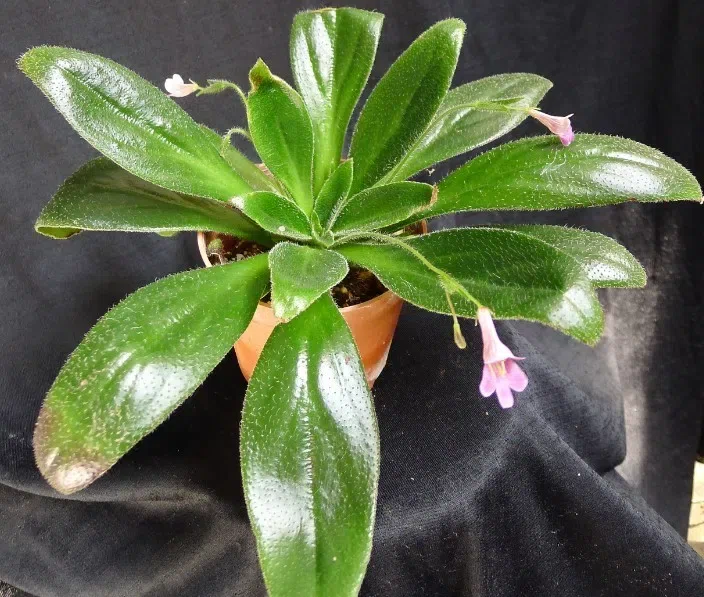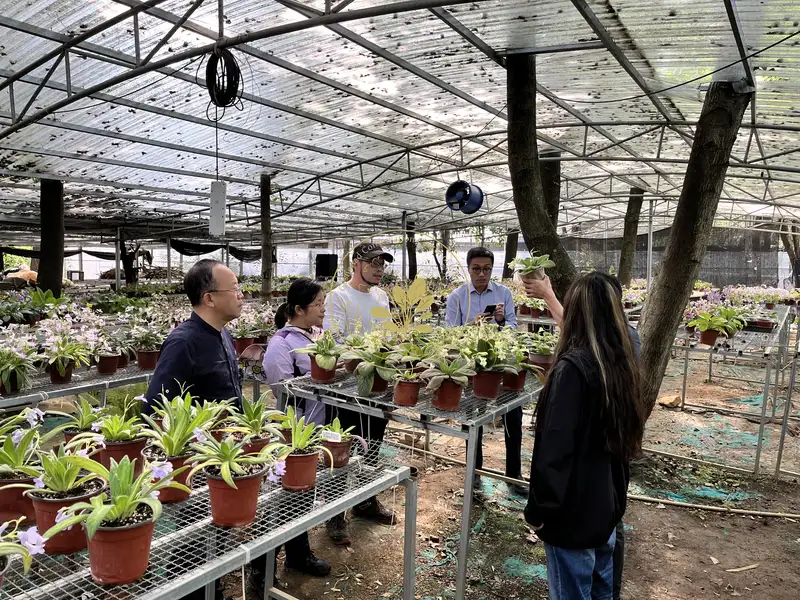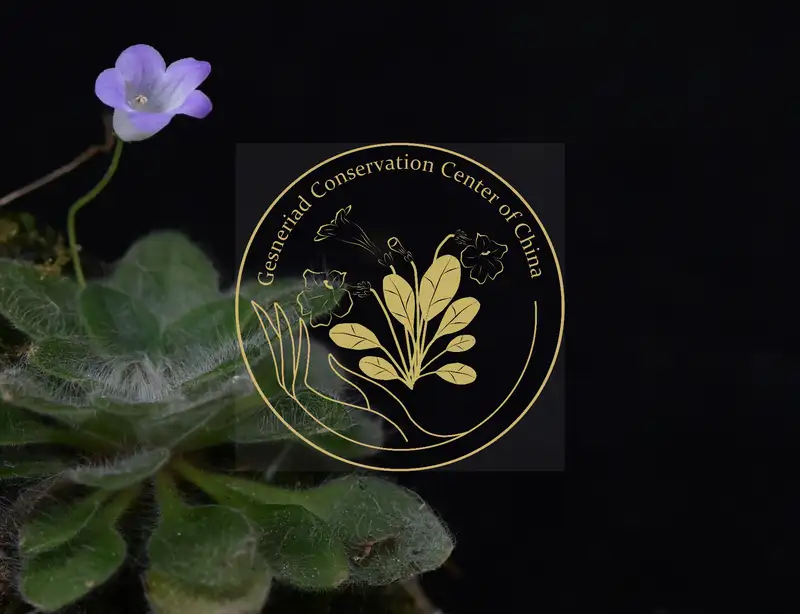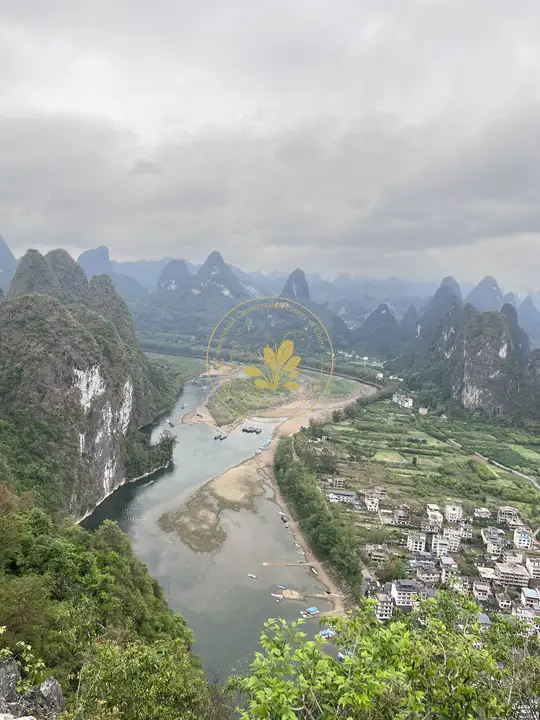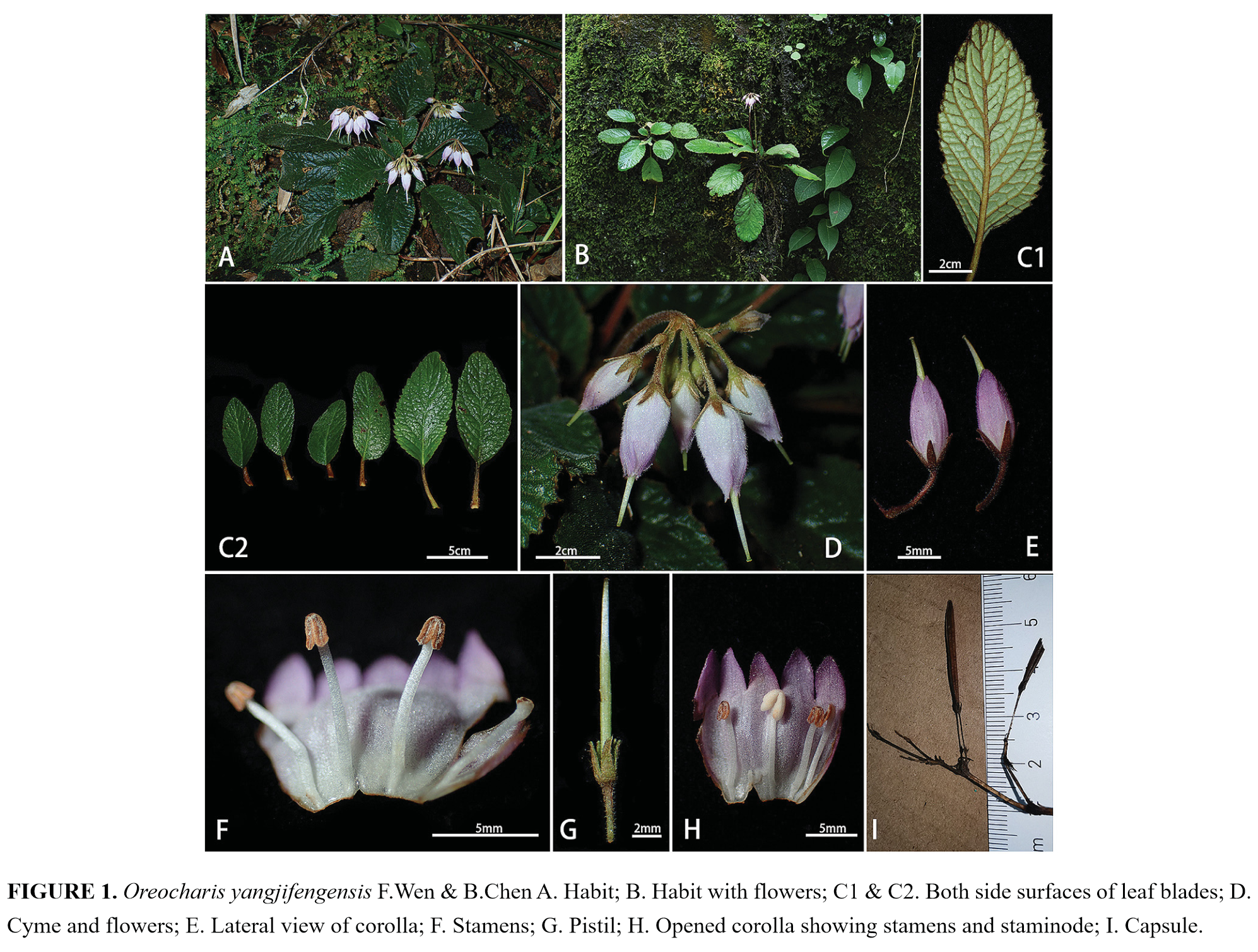No. 1 Qiang Zhang, Bo Pan, Tao Meng, Guo-Feng Li, Wei-Bin Xu & Zhi-Ming Li: Petrocosmea funingensis(Gesneriaceae): a new species from southeastern Yunnan, China —Phytotaxa 77(1): 5-8.
ABSTRACT
Petrocosmea funingensis, a new species from southeastern Yunnan, China is here described andillustrated. Based on morphological characters it is assumed to belong to section Anisochilus, because of the shallow or slight split of the corolla lobes with the upper lip being nearly half as long as the lower one. Within the section, the new species is associated with the species from series Iodioides, due to the particularly extensive fusion of the two adaxial lobes and is morphologically most similar to P. huanjiangensis and P. iodioides, especially in floral structure and traits, but can be distinguished from these species by several quantitative and qualitative characters of the leaves, peduncles, calices, stamens, staminodes and styles.
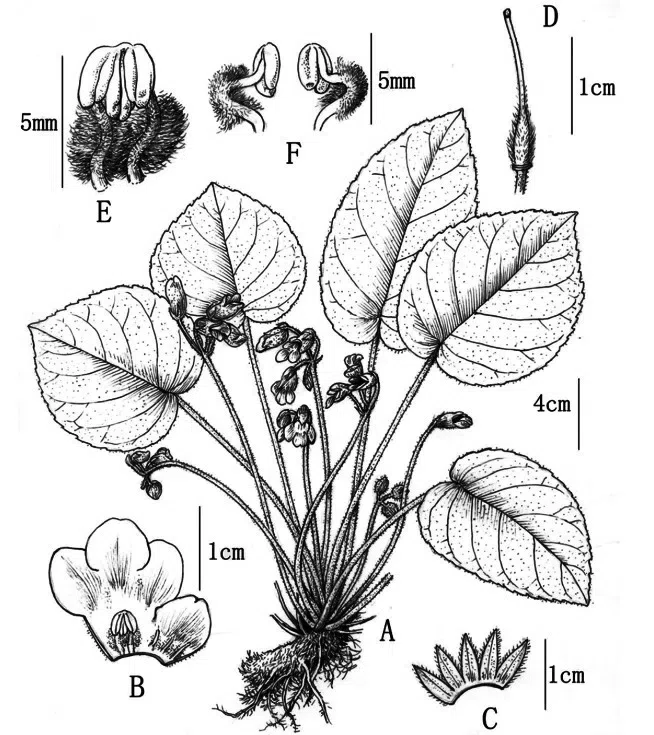
FIGURE 1. Petrocosmea funingensis. A) Habit; B) Corolla opened showing stamens; C) Calyx; D) Pistil; E–F)
Stamen. Drawn by Wen-Hong Lin. The figure was cited from Zhang et al. (2013).
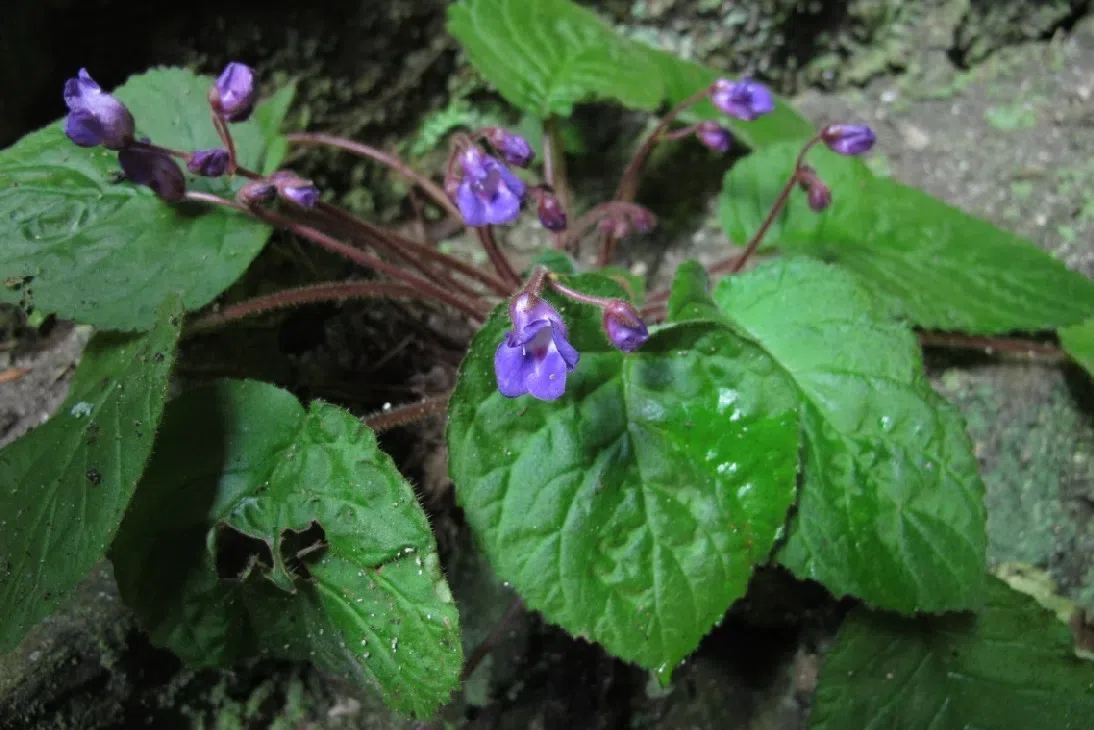
Photo by Mr. Bo Pan
Where can you get this paper or available information?More beautiful color pictures are shown in this paper.
Please email to the corresponding author.
No. 2 Zu-Lin Ning, Guo-Feng Li, Jing Wang, James F. Smith, Hiobiarilant Rasolonjatovo & Ming Kang: Primulina huaijiensis (Gesneriaceae), a new species from Guangdong, China, a rare new species of Gesneriaceae from eastern Guangxi, China. Ann. Bot. Fennici 50: 119–122.
ABSTRACT
Primulina huaijiensis Z.L. Ning & J. Wang sp. nova (Gesneriaceae) from Guangdong, China is described and illustrated. It is similar to P. renifolia, but differs from P. renifolia in several morphological characters, both vegetative and reproductive as well as in having a different flowering period (October–December).
ABSTRACT
Fig. 1. Primulina huaijiensis (from the holotype, drawn by Yun-Xiao Liu). — A: Habit. — B and C: Corolla. — D: Corolla opened, with stamens and staminodes. — E: Stamens. — F and H: Calyx and pistil. — G: Stigma. — I
and J: Capsule.
The figure was cited from Ning et al. (2013).
Where can you get this paper or available information? Please email to corresponding author.No. 3 Fang Wen, Bo Zhao, Gui-You Liang & Yi-Gang Wei: Primulina lutvittata (Gesneriaceae), a new species from a limestone cave in Guangdong, China.
Primulina lutvittata Fang Wen & Y.G. Wei, a new species of Gesneriaceae from Guangdong, China, is described and illustrated. It is morphologically similar to P. fengshanensis , but differs by several characters of the leaves, cymes, bracts, corollas and anthers.
Fig. 1. Primulina lutvittata (from the holotype, drawn by W.H. Lin). — A: Habit. — B: Corolla opened, showing stamens and staminodes. — C: Calyx and pistil.
Photo by Dr. Fang Wen


